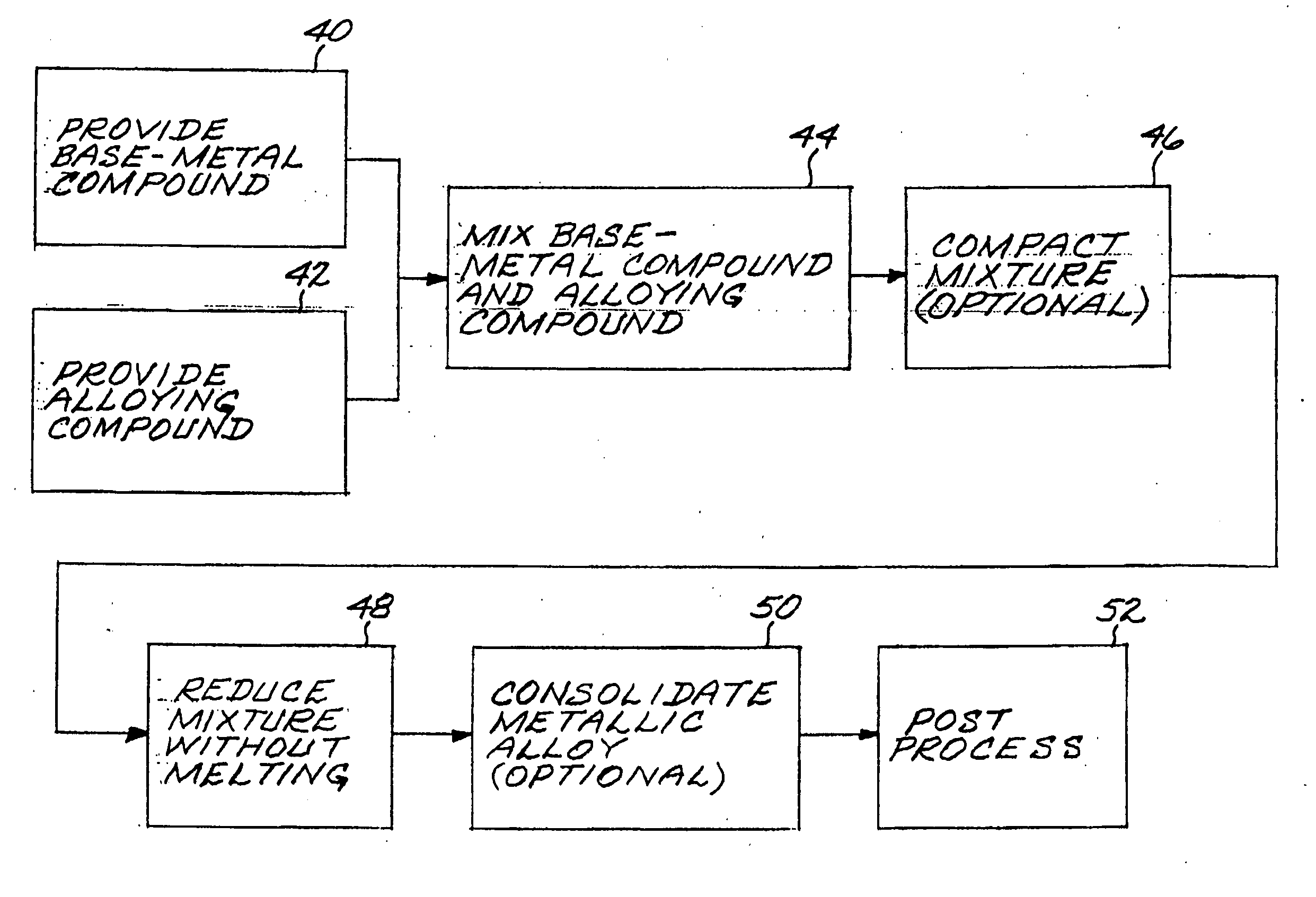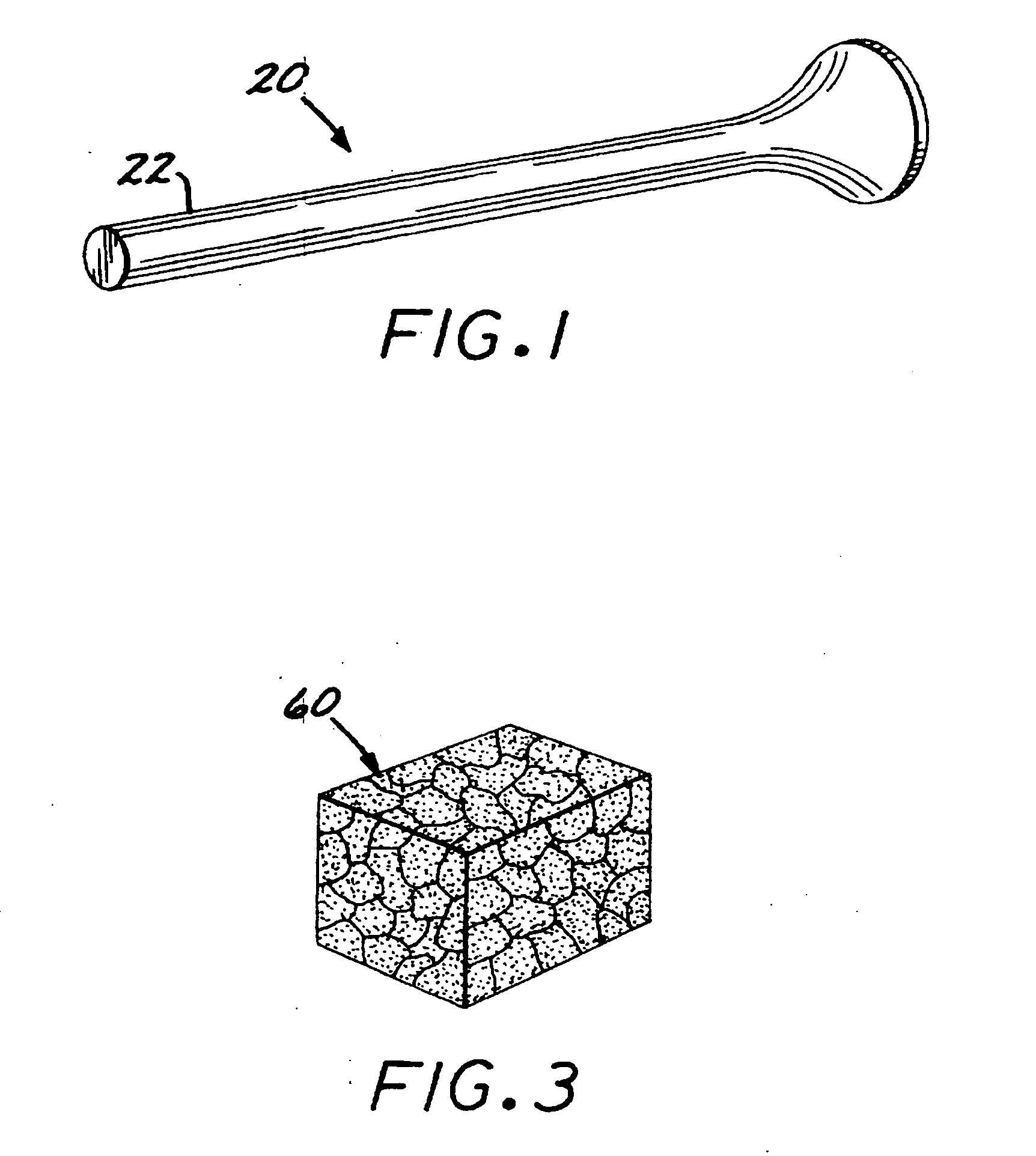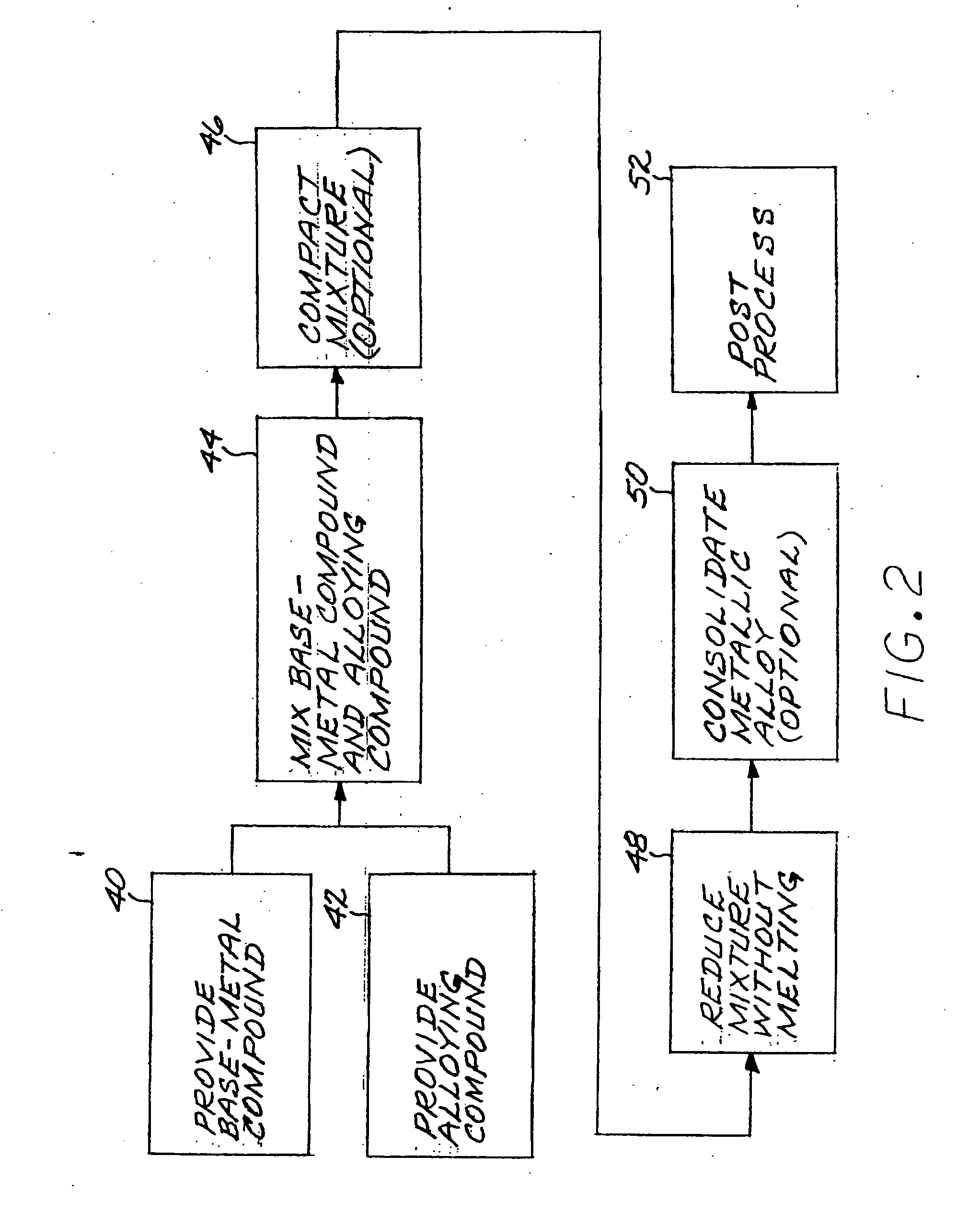Meltless preparation of martensitic steel articles having thermophysically melt incompatible alloying elements
a martensitic steel and alloying element technology, applied in coatings and other directions, can solve the problems of imposing some fundamental limitations on the alloy content, avoiding methods, and avoiding problems, so as to improve the inspectionability, reduce the noise level, and improve the effect of inspectionability
- Summary
- Abstract
- Description
- Claims
- Application Information
AI Technical Summary
Benefits of technology
Problems solved by technology
Method used
Image
Examples
Embodiment Construction
[0039] The present approach may be used to make a wide variety of metallic articles 20, such as a gas turbine shaft 22 of FIG. 1. The shaft 22 is only one example of the types of articles 20 that may be fabricated by the present approach. Some other examples include other gas turbine parts such as stationary seals, bearing components, rings, cases, and frames, automobile parts, biomedical articles, and structural members such as airframe parts. There is no known limitation on the types of articles that may be made by this approach.
[0040]FIG. 2 illustrates a preferred approach for an article of a base metal and a thermophysically melt-incompatible alloying element. The method includes providing a chemically reducible nonmetallic base-metal precursor compound, step 40, and providing a chemically reducible nonmetallic alloying-element precursor compound of an alloying element that is thermophysically melt incompatible with the base metal, step 42. “Nonmetallic precursor compounds” are...
PUM
| Property | Measurement | Unit |
|---|---|---|
| melting point | aaaaa | aaaaa |
| density | aaaaa | aaaaa |
| liquidus temperature | aaaaa | aaaaa |
Abstract
Description
Claims
Application Information
 Login to View More
Login to View More - R&D
- Intellectual Property
- Life Sciences
- Materials
- Tech Scout
- Unparalleled Data Quality
- Higher Quality Content
- 60% Fewer Hallucinations
Browse by: Latest US Patents, China's latest patents, Technical Efficacy Thesaurus, Application Domain, Technology Topic, Popular Technical Reports.
© 2025 PatSnap. All rights reserved.Legal|Privacy policy|Modern Slavery Act Transparency Statement|Sitemap|About US| Contact US: help@patsnap.com



